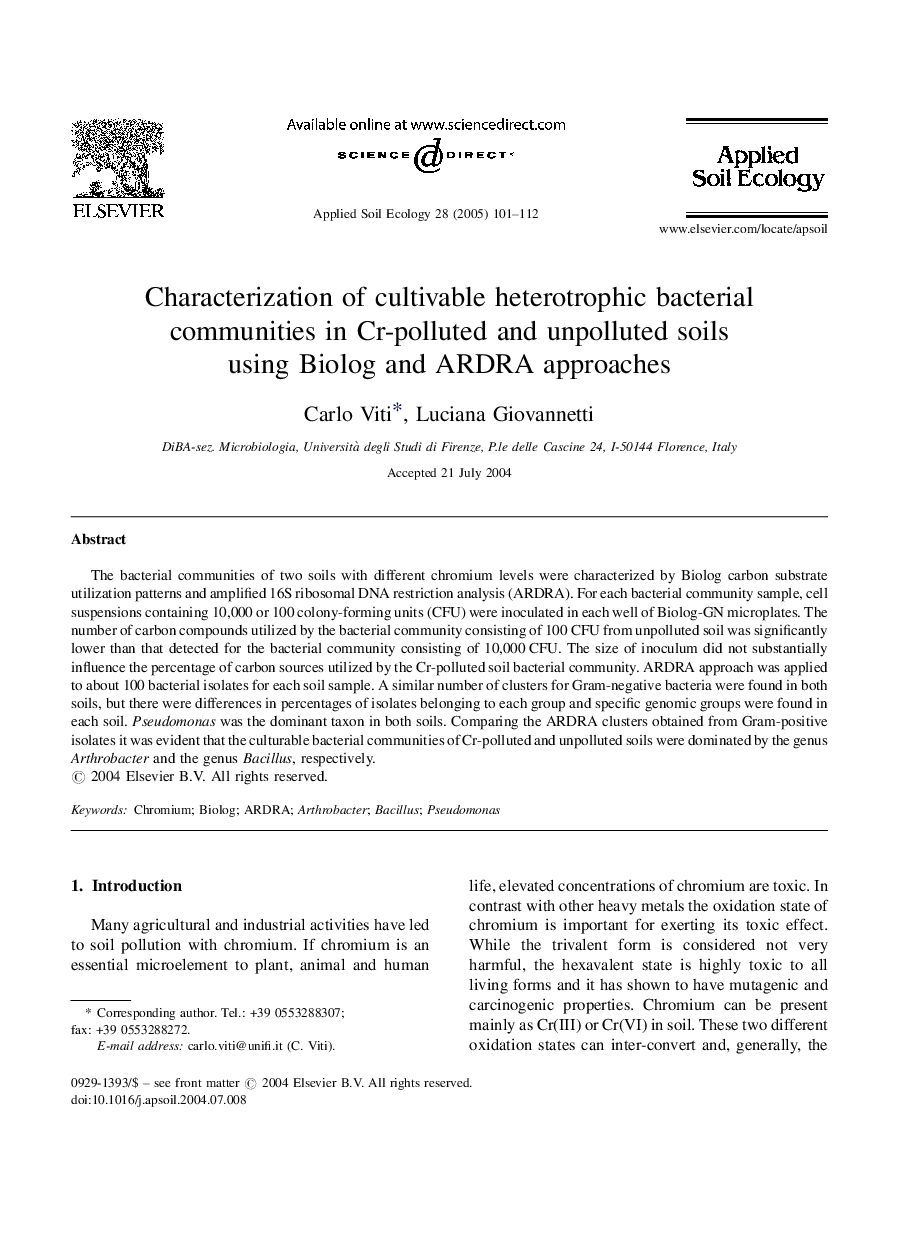| Article ID | Journal | Published Year | Pages | File Type |
|---|---|---|---|---|
| 9445231 | Applied Soil Ecology | 2005 | 12 Pages |
Abstract
The bacterial communities of two soils with different chromium levels were characterized by Biolog carbon substrate utilization patterns and amplified 16S ribosomal DNA restriction analysis (ARDRA). For each bacterial community sample, cell suspensions containing 10,000 or 100 colony-forming units (CFU) were inoculated in each well of Biolog-GN microplates. The number of carbon compounds utilized by the bacterial community consisting of 100Â CFU from unpolluted soil was significantly lower than that detected for the bacterial community consisting of 10,000Â CFU. The size of inoculum did not substantially influence the percentage of carbon sources utilized by the Cr-polluted soil bacterial community. ARDRA approach was applied to about 100 bacterial isolates for each soil sample. A similar number of clusters for Gram-negative bacteria were found in both soils, but there were differences in percentages of isolates belonging to each group and specific genomic groups were found in each soil. Pseudomonas was the dominant taxon in both soils. Comparing the ARDRA clusters obtained from Gram-positive isolates it was evident that the culturable bacterial communities of Cr-polluted and unpolluted soils were dominated by the genus Arthrobacter and the genus Bacillus, respectively.
Related Topics
Life Sciences
Agricultural and Biological Sciences
Ecology, Evolution, Behavior and Systematics
Authors
Carlo Viti, Luciana Giovannetti,
